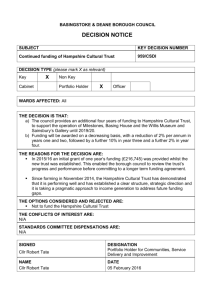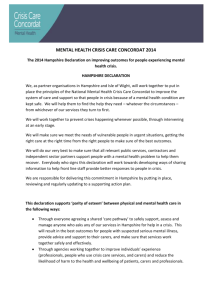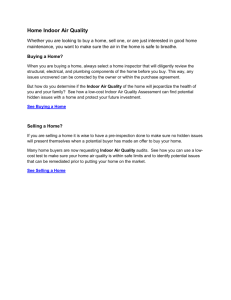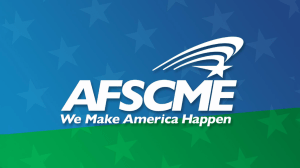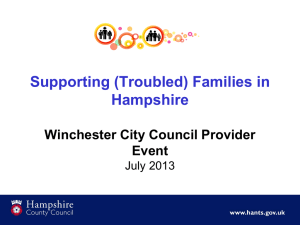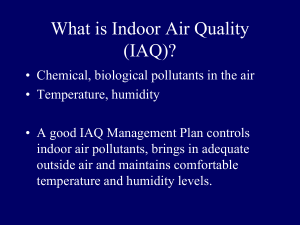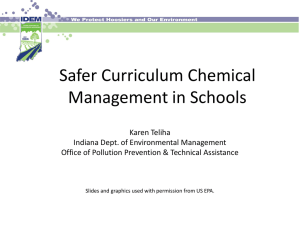Implementing NH School Air Quality Laws Webinar Power Point
advertisement
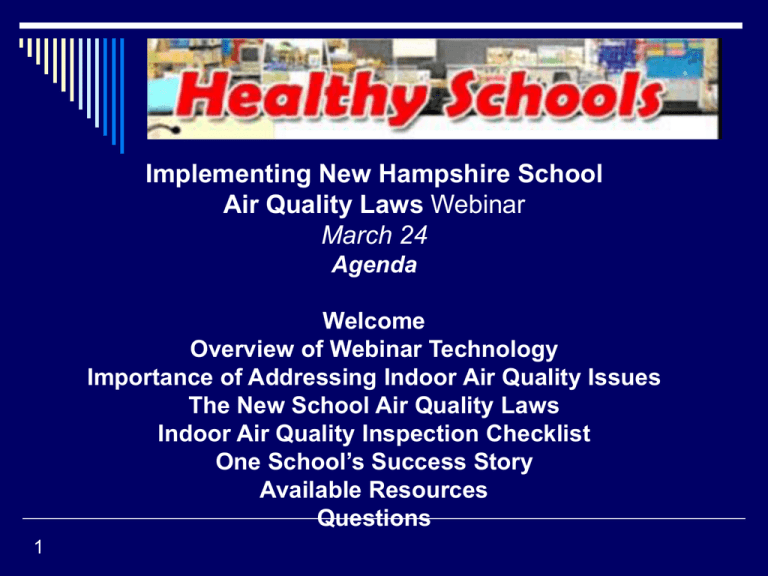
Implementing New Hampshire School Air Quality Laws Webinar March 24 Agenda Welcome Overview of Webinar Technology Importance of Addressing Indoor Air Quality Issues The New School Air Quality Laws Indoor Air Quality Inspection Checklist One School’s Success Story Available Resources Questions 1 Eugene Benoit Environment Engineer Indoor Environments Program Regional Tools for Schools Coordinator Regional Asthma Team US EPA New England Regional Office Boston, MA Tel. 617 918 1639 benoit.eugene@epa.gov 2 NEW HAMPSHIRE SCHOOL INDOOR AIR QUALITY (IAQ) REQUIREMENTS EDWARD R. MURDOUGH PE NH DEPARTMENT OF EDUCATION MARCH 24, 2011 3 Statutory Requirements RSA 189:24 – Provide “… a suitable and sanitary building … with suitable provision for the care of the health and physical welfare of all pupils.” RSA 200:11-a – “The school principal, or designee, shall annually investigate the air quality of any schoolhouse or building used for school purposes using a checklist provided by the department of education.” 4 Administrative Rules Ed 306.07(a)(1) – “Consistent with RSA 189:24 a clean, healthy, and safe learning environment ….” Ed 306.07(a)(3) – “Exhaust and outdoor air ventilation, proper temperature and humidity conditions in compliance with the state building code ….” Ed 306.09 – “…custodial services as are necessary to ensure a clean, sanitary, and safe physical plant and grounds. The school plant shall be cleaned on a daily basis. School repairs and maintenance shall be performed on a regular basis.” 5 IAQ Inspection Who should do it? - Law assigns responsibility to principal - Principal may designate someone Who has expertise? - Maintenance staff - Nurse - Assistant principal - Wellness team - Tools for Schools (TfS) Team 6 IAQ Inspection What is involved? - Physical walk around - Records check Air testing is not required Professional experts are not required 7 IAQ Checklist, Form A24IAQ Sections Administration Quality Maintenance Control of Moisture/Mold Strong Integrated Pest Management (IPM) Effective Cleaning and Maintenance Smart Materials Selection Aggressive Source Control Building Exterior 8 Administration Does the school have a TfS kit? Safety/wellness committee? No idling policy? Other policies? Complaints and deferred maintenance? 9 Quality Maintenance Is there a maintenance plan/program? Is preventive maintenance being done? 10 Control of Moisture/Mold Do you address leaks, spills, and condensation promptly and effectively? 11 Strong Integrated Pest Management (IPM) Do you have an IPM program? Do you control pesticide use in your building? 12 Effective Cleaning and Maintenance Are custodial staff properly trained in the use of toxic chemicals? Do you use best cleaning practices and equipment? Do you minimize the use of highly toxic chemicals? 13 Smart Material Selection Do you minimize volatile organic compounds (VOCs)? Do you know what is in your building? Do you avoid the use of products containing toxic chemicals and other hazardous materials? 14 Aggressive Source Control Do you property store, handle, and dispose of hazardous materials? Have you tested for radon and installed a mitigation system if levels exceed recommended amount? Do you have walk-off mats at all entrances? Do you flush the air periodically? 15 Building Exterior Is the roof inspected and properly maintained? Is the envelope in good condition? Are sources of pollutants such as vehicles and trash dumpsters kept away from air intakes? 16 Submission Requirements Annually to: School Board Town Health Officer Dept. of Education Required for School Approval process 17 Contact Information Ed Murdough Administrator Bureau of School Approval & Facility Management NH Dept. of Education (603) 271-2037 emurdough@ed.state.nh.us 18 The Healthy Schools Story At Lamprey River Elementary School Raymond, NH Dan LeGallo 3/24/2011 19 This? 20 This? 21 This? 22 This? 23 This? 24 This? 25 Or This? 26 Or This? 27 Or This? 28 29 Or This? Or This? 30 What did we do? • • • • • • 31 Applied for the Healthy Schools Grant Partnered with all stakeholders Educated!! Educated!! Educated!!! EPA Tools for Schools Bridged the Knowing/Doing Gap Sweat Equity!!!! Program Partners & Interventions • New Hampshire Asthma Control Program (NHACP) • New Hampshire Department of Agriculture (AGR) • New Hampshire Department of Education (DOE) • New Hampshire Department of Environmental Services (DES) • Breathe New Hampshire • New Hampshire Partnership for High Performance Schools (NHPHPS) • New Hampshire Coalition for Occupational Safety & Health (NHCOSH) • Council for Children and Adolescents with Chronic Health Conditions (CCACHC) • New Hampshire Local Government Center (LGC) 32 32 Program Outline 33 1. Orientation Meeting 2. Building and Asthma Management Issues Training; Data Collection 3. Building Assessment and Walkthrough Training; Data Collection 4. Building Walkthrough; Data Collection 5. Planning and Implementation: Review Data, Set Priorities, Develop Work Plan, Implement, Evaluate 33 Chemicals • Remove unauthorized chemicals – Air fresheners, plug-ins, bleach, spray cleaners – Soap and Water • Keep custodial supplies out of the hands of staff • Provide staff with appropriate supplies and provide training on hazard communication 34 Housekeeping/Storage • Teachers: – Clean personal effects monthly • Microfiber cloths • Spray bottle with approved cleaner – Store materials efficiently • Boxes/totes, Flat Surfaces – Launder items • Cloths, Stuffed Animals, Mats – Purge 35 Allergy Asthma Triggers • Managing Pollutants Within – Eliminate Stuffed Furniture – Create Policy for Animals/Fish – Require Laundering of Mats, Cloth, Stuffed Animals Monthly (minimum) – Reduce Loose and Flaking Paper – Eliminate the Chemicals • Pay attention to air fresheners/plug-ins • Household Cleaners 36 Accountablity 37 • Set high expectations for classroom/Modify Behaviors • Provide Staff Education • Empower the custodians to confiscate chemicals and report issues (AFTER staff education) • Engage the students in energy conservation/cleaning activities • Use positive reinforcement • Reward positive changes Positive Outcomes • • • • 38 More Functional Space Improved morale (Staff & Students) Higher Student Performance Renewed sense of pride in how the building looks & feels • Less visits to the Nurse • Less Absenteeism • Reduce use of inhalers/medication Positive Outcomes • Improve Teamwork in the School • Create ownership of School issues • Increase internal capacity to change (Culture) • Reduce Operating/Energy Costs 39 KEYS TO SUCCESS • Engage an array of people to participate on the Healthy Schools Team • Identify key contact for school and an asthma “champion” • Use a work plan and timetable to implement activities • Recognize and resolve problems or obstacles in a timely manner • Administration and other key school personnel support the program 40 40 Daniel LeGallo LRES Principal d.legallo@sau33.org 895-3117 ext. 3103 41 IAQ Web Resources for Schools NH Partners for Healthy Schools www.nhhealthyschoolenvironments.org NH Partners for Healthy Schools -Applicationwww.nhhealthyschoolenvironments.org/application.html US EPA Tools for Schools www.epa.gov/tfs 42 Questions? 43
